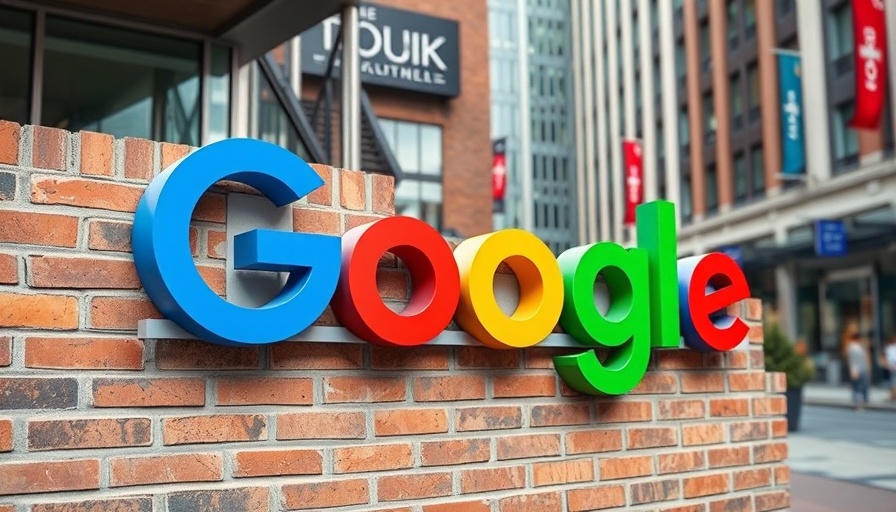
Unpacking Google's Gemini AI Model: A Double-Edged Sword
In the fast-paced world of technology, new innovations often walk a fine line between progress and controversy. Google’s latest AI model, Gemini 2.0 Flash, has made waves for its ability to generate and edit images, but its powerful watermark removal feature is raising some serious ethical concerns. As users on platforms like X and Reddit reveal its capabilities, Gemini's uses, especially in removing watermarks from copyrighted images, highlight a major conflict between technological potential and copyright law.
The Wild West of AI Image Editing
The emergence of AI tools like Gemini 2.0 Flash marks a significant shift in image editing. While tech-savvy users revel in the freedom to prompt the AI with simple instructions to create or modify images, they also stumble upon its ability to cleanly erase watermarks. The controversy lies in the fact that these watermarks often protect the rights of photographers and stock image companies like Getty Images, who invest heavily in the creation and distribution of their visual content. When users exploit this tool for watermark removal, are they merely seeking creative freedom, or are they encroaching on the rights of content creators?
The Implications of Copyright Infringement
Copyright infringement is not just a legal concern; it’s a matter of deep ethical significance. Under U.S. law, removing watermarks without permission from copyright holders is illegal, carrying potential legal liabilities for those who do it. Recent discussions have highlighted that Google has few safeguards in place to prevent misuse of the Gemini model. While some AI platforms, like OpenAI’s models, have opted to restrict features that allow for watermark removal, Gemini appears to have taken a different approach, creating a platform that can unintentionally facilitate the very violations they should prevent.
Ethics in AI: A Broader Discussion
This controversy invites a broader dialogue about the ethical implications of AI in creative fields. If AI can easily replicate or modify existing content, what does that mean for artists and creators who rely on their work for income? As highlighted in discussions surrounding Gemini, there’s an urgent need for AI developers to incorporate ethical frameworks into their technology. Echoing concerns expressed previously by voices like Elon Musk, the fear is that without strict controls, these advanced AI systems might contribute to a culture of disregard for intellectual property.
Future Trends in AI and Copyright Law
Predicting the future of AI in relation to copyright will be challenging, but trends indicate that regulatory scrutiny is set to increase. Companies deploying similar technologies could soon face pressure to ensure their AIs support ethical standards and respect copyright laws. As Gemini 2.0 Flash and its capabilities continue to evolve, the industry may find itself at a crossroads, where creativity and legality must be delicately balanced.
User Reactions: A Divide in Perspectives
The response from users has been decidedly mixed. On one hand, creators appreciate the newfound freedom to manipulate images without technical barriers; conversely, countless professionals and advocates for creatives voice their distress over the implications of widespread watermark removal. How one feels about this technology often correlates with their connection to the visual arts—they may either see it as an exciting tool or a threat to their livelihood.
Lessons Learned: Importance of Responsible AI Usage
As digital tools become more advanced, it is crucial for users to approach these technologies with responsibility. Whether you're a casual social media user or a professional in the visual arts, understanding the implications and legalities of your actions can prevent unintended consequences. Engaging with AI responsibly not only protects oneself from potential legal issues but fosters a culture where both innovation and respect for creativity can coexist.
Shaping the Future: What Can Be Done?
To navigate the challenges presented by AI models like Gemini, stakeholders must consider proactive measures. For companies developing these technologies, integrating ethical considerations from the start will be paramount. Responsibilities could include developing more robust controls against misuse while educating users about copyright laws. Meanwhile, artists may need to advocate for their rights more vocally, emphasizing the importance of protecting their work against AI misuse.
In conclusion, Google’s Gemini 2.0 Flash reflects both remarkable advancements in AI technology and the pressing need for ethical guidelines to govern its use. As we push forward into this new era, understanding the intersection between creativity and legality will be essential in shaping a future that respects and protects the creations of individuals.
 Add Row
Add Row  Add
Add 




Write A Comment